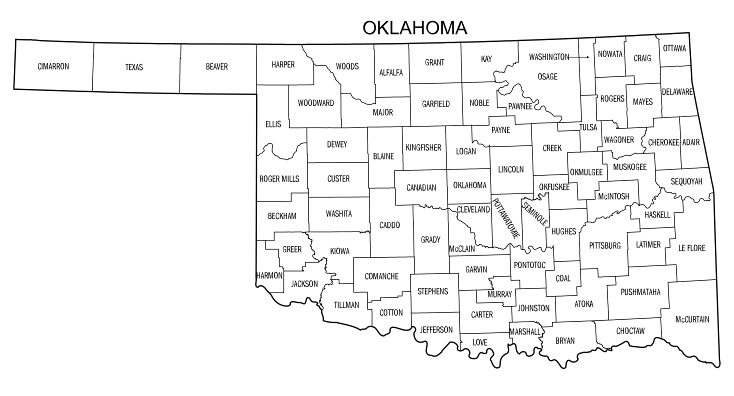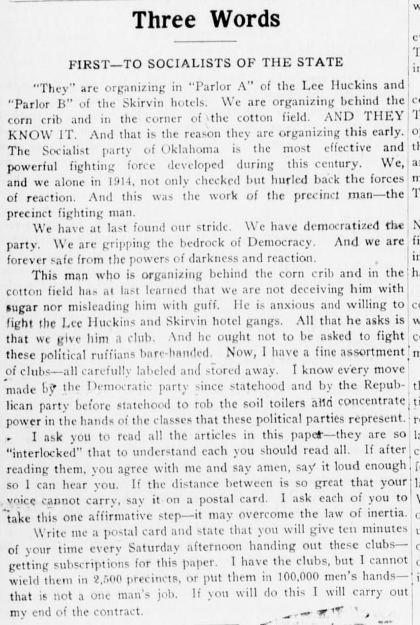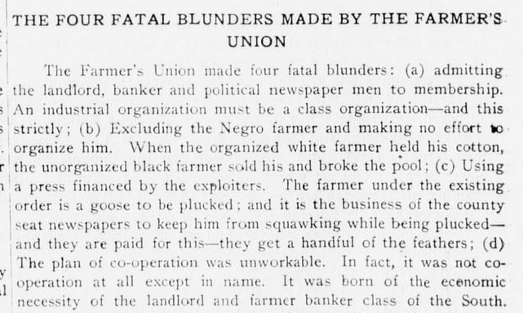
Tenant Farming in Oklahoma
Activities
Using Data Spatially: Mapping Farm Ownership in Oklahoma, 1910
Use this table or the Excel file to learn about the prevalence of tenant farming in Oklahoma during early statehood. Use the table to determine whether the number of owned farms is greater or lesser than the number of farms operated by tenants. Assign a color for the counties with more owned farms than tenant farms and a different color for the counties with fewer owned farms than tenant farms. Use that data to create a map.
Don’t forget to include a title and a map key!

Nagle, P. S. The Tenant Farmer, September 1912.(Note: Pittsburg County is in error.)
Using Data Spatially: Mapping Farm Ownership in Oklahoma, 1910
Use this table or the Excel file below to learn about the prevalence of tenant farming in Oklahoma during early statehood. Use the table to determine whether the number of owned farms is greater or lesser than the number of farms operated by tenants. Assign a color for the counties with more owned farms than tenant farms and a different color for the counties with fewer owned farms than tenant farms. Use that data to create a map.
Don’t forget to include a title and a map key!

Do you notice any patterns as you look at this information spatially that were not obvious on the table? Can you draw any conclusions about farming in Oklahoma based on this data? What questions do you have about farming in Oklahoma after creating this map?
Did you know that Oklahoma still has tenant farmers?
Check out this report from the Oklahoma State University County Extension: extension.okstate.edu/fact-sheets/oklahoma-cropland-rental-rates-2020-21.html.
Analysis: What does it mean to be a responsible citizen?
The idea of citizenship has changed over time, in particular, who should have it and what it means. At the end of the 19th century, unions, farm organizations, and the Socialist Party formed into large, national organizations. Each of these groups developed ideas about citizenship that went beyond voting every couple of years. Read the excerpts below and find examples of what they believed good citizens should and should not do.

Nagle, P. S., The Tenant Farmer, May 1915.

Nagle, P. S., The Tenant Farmer, May 1915.
Summarizing Cotton
Summarization is an important communication skill. Summarizing means providing a shortened version of a longer piece. When you summarize, you are trying to give the reader or listener a basic statement about the main ideas, or the most important information from a longer work. It is important that your summary is accurate and that you do not add information. You also need to put it in your own words. A good way to practice is to read an article or watch a video and write down the main ideas. Once you have the key information, you can put it in your own words. Try to practice your summarization skills as you learn about cotton:
The importance of cotton as a crop to the United States can not be overstated. Cotton production caused many Southerners to enslave a large number of people and forced them to work on cotton plantations. The desire for land to expand cotton production was a major reason for the removal of American Indian Tribal Nations in the southeastern portion of the United States. The wealth generated from cotton as a cash crop resulted in the capital, or money that can be invested, to start the industrialization of the country.
The History of Cotton
https://www.youtube.com/watch?v=lsz1PA-JYKU
Growing and Harvesting Cotton
https://www.youtube.com/watch?v=lCidlr_pbI4
Life on the Plantation as Told by Elvin Shields
https://www.youtube.com/watch?v=Hof7n6VdiEE
Now, take your notes and create a summary of these videos. You can write your own summary or present your summary in a video.

Cotton headed to the gin in Muskogee, Oklahoma, c. 1899 (14542.0, Heye Foundation Collection, OHS)

Nagle, P.S. “An Eventful Day in the Life of the Tenant Farmer”, The Tenant Farmer, October 1, 1914. Read this article on The Gateway to Oklahoma History

